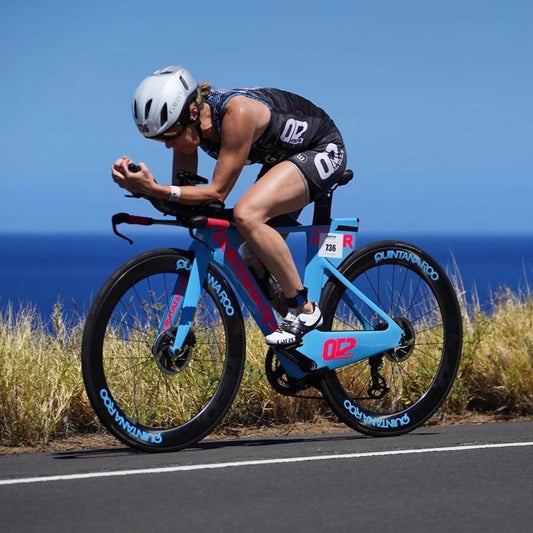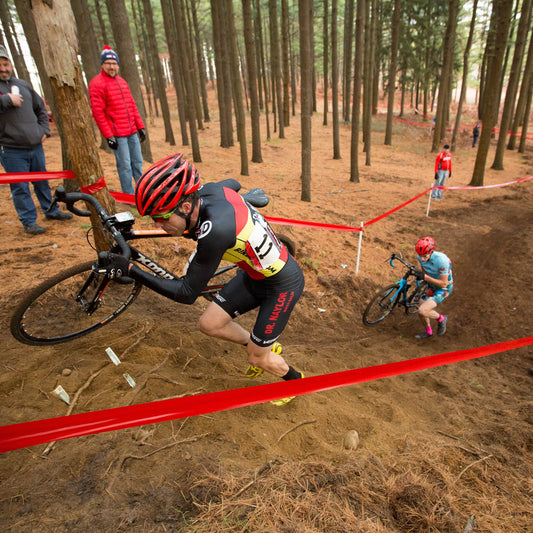Critical Volume II
After receiving many, many questions over the past couple of years regarding critical volume, I have decided to address/clarify it through this writing. My objective here is to clear up some of the misconceptions regarding this concept and to help solidify its relevance particularly in IM training.
Here is the simplest example of the concept for critical volume: You have a friend that you can beat at the 5k, a 15 mile bike ride and a 400 TT in the pool even though that friend trains much more than you. However, when you go to the half iron distance he successfully beats you by 10 minutes. This is where critical volume comes in; he has gained the durability (through volume) to extend his speed potentials to longer race distances (even though you may have better speed potential curves). What critical volume does is suggest how much training is required to gain the majority of the durability required to meet your speed potential for various race distances. At long distance races, this lack of durability is the major determiner of time loss for most people. Meet critical volume, and you will beat most people around your speed potential even though they may be faster than you at short distance racing. This is even more the case in IM racing where almost no one except some in the pro wave meet critical.
A lot of people misunderstand my critical volume posts to mean "he says you must do these huge training mileages to do well in IM…..that's crazy". That's not what critical volume is about. Below is a figure I have developed to further illustrate my point. On the left you can see that an athlete's 5k time is what anchors the speed potential curve (shifts it up and down). This is a good indicator of speed potential since the distance is short enough to not have durability be a limiter. Believe it or not, these curves are fairly constant from individual to individual. That is, if two people have the same 5k time and both meet critical volume for a half marathon, they will race very close at the half marathon. In the example below, this athlete trains enough to meet critical volume for the half marathon (7/3 x 13.1 = 30 miles per week). Based on that, he will be able to meet his 5k determined speed potential curve for all race distances up to and including the half marathon. If he try's to race a distance longer than that, his speed follows the dotted line which indicates his performance has been limited by the lack of durability (unable to meet speed potential curve).

The reason why so many age groupers race IM so much slower than they may expect is due to this occurrence. One thing to note on the figure is that an improvement in your speed potential curve even after years of training is not nearly worth the benefit you get from meeting critical volume in for your race distance. Time lost by lack of durability can be huge in comparison to minor differences in speed potential (that can take years to achieve). This is why the QT2 training methods focus on meeting critical volume before anything else. There is no need to dabble in speed work or other risky training methods (that may increase speed potential) until you are able to meet or get very close (at least 2/3) to critical volume (which provides durability). Instead, we focus on the details such as nutrition and rest which are the support structure to allow one to meet critical volume without becoming sidelined due to sickness/injury. As shown in the figure, the benefit of meeting the durability required for your race distance is much more than any improvements in speed potential.
Additional training beyond critical volume does not typically do much but decrease speed potential due to inadequate recovery between key workouts, elevated catabolic hormones, and the inability to push previous bests on the key intensity days due to a fried peripheral system. Typically athletes who have gained the durability (through volume) to race a double ironman, don't have the speed potential to be competitive at the single iron distance. This is the same with ultra marathon relative to marathon. Due to this realization, more isn't always better. Instead, just enough, with good quality mixed in at the appropriate doses is the correct approach. Build volume slowly over many years (add 10-15% max per year), mix in VERY good quality workouts, and never do anything today that even has the slightest chance of risking tomorrow...
-Jesse





